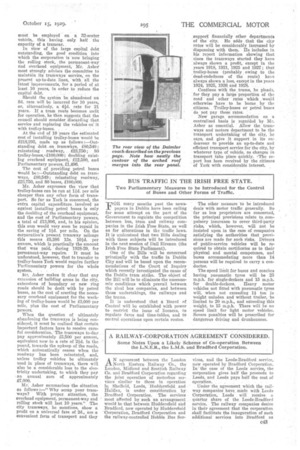BUS TRAFFIC IN THE IRISH FREE STATE,
Page 81

If you've noticed an error in this article please click here to report it so we can fix it.
Two Parliamentary Measures to be Introduced for the Control of Buses and Other Forms of Traffic.
TIOR many months past the news,.12 papers in Dublin have been calling for some attempt on the part of the Government to regulate the competition between bus, tram and railway companies in the Irish Free State as well as for alterations in the traific laws. It is understood that two Bills dealing with these subjects will be introduced in the next session of Dail Eireann (the Irish Free State Parliament).
One of the Bills will be concerned principally with the traffic in Dublin City and will be based upon the recommendations of the Court of Inquiry which recently investigated the cause of the Dublin tram strike. The object of the Bill will be to eliminate the uneconomic conditions which prevail between the rival bus companies, and between those undertakings, the railways and the trams.
It is understood that a Board of Control will be established with power to restrict the issue of licences, to regulate fares and time-tables, and to control operations upon certain routes. The other measure to be introduced deals with motor traffic generally. So far as bile proprietors are concerned, the principal provisions relate to, compulsory insurance to cover third-party risks, which, however, will not be insisted upon in the case of companies satisfying the authorities that provisions are made for such risks. Drivers of public-service vehicles will be required to obtain certificate:3 as to their physical and mental competence, and buses accommodating more than 14 persons will be required to carry a conductor.
The speed limit for buses and coachea having pneumatic tyres will be 25 mp.h. for singleeleekers and 15 m.p.h. for double-deckers. Heavy motor vehicles not fitted with pneumatic tyres will, when not exceeding 1 ton in weight unladen and without trailer' -be limited to 20 m.p.h., and eseceeding this weight, to 15 m.p.h. There will be no speed limit for light motor vehicles. Severe penalties will be prescribed for dangerous driving and drunkenness.




























































































































